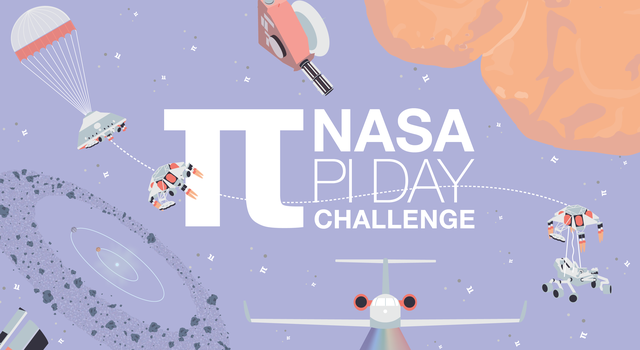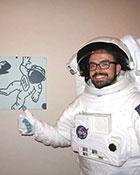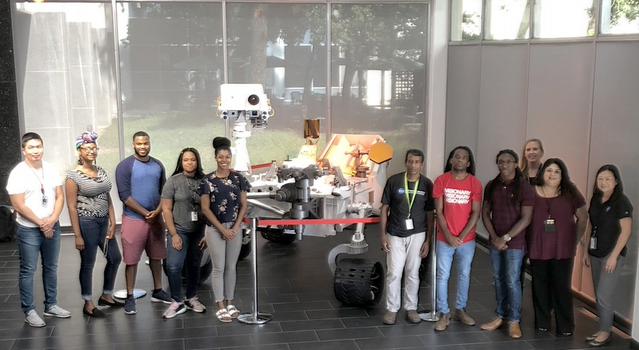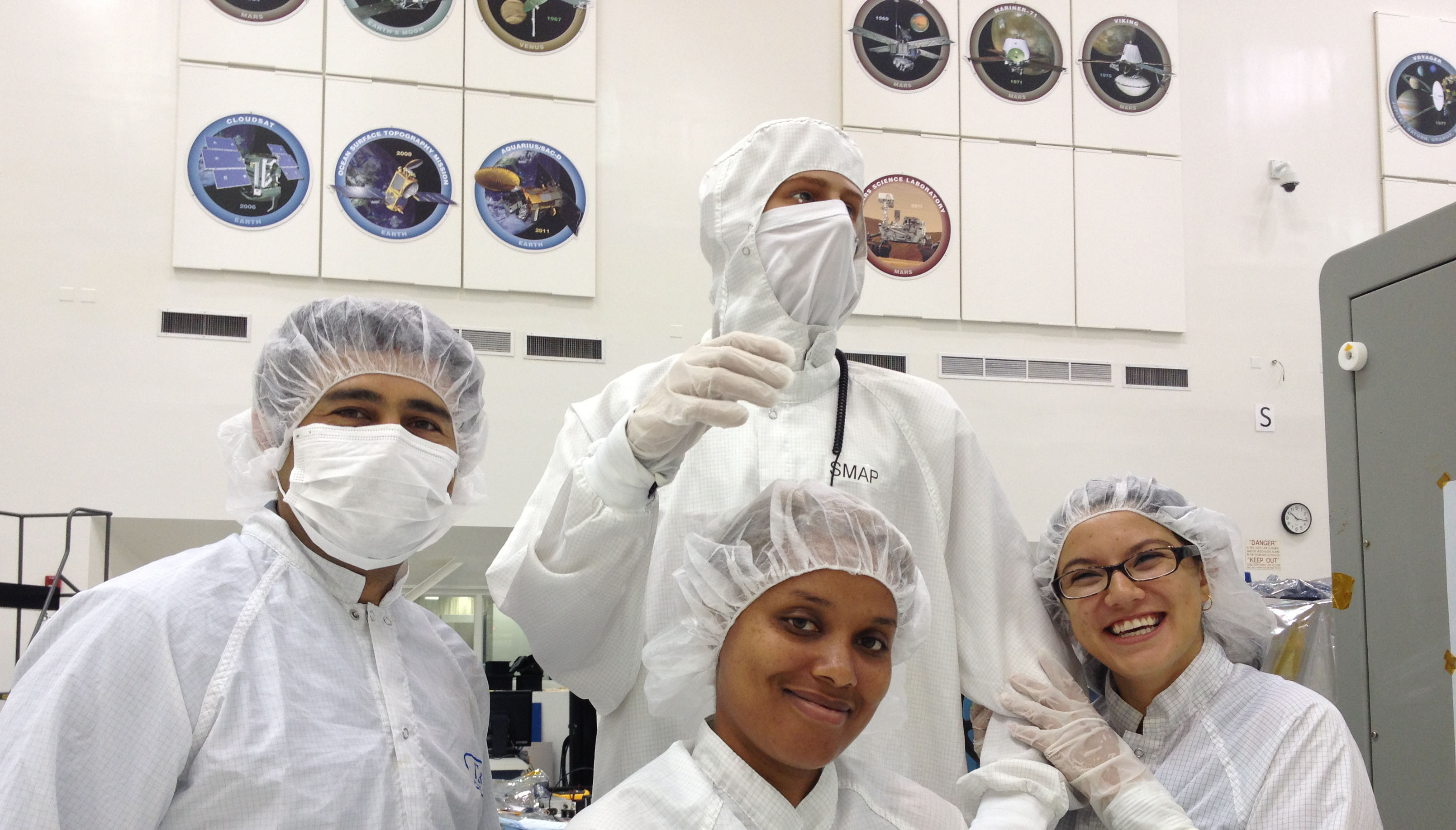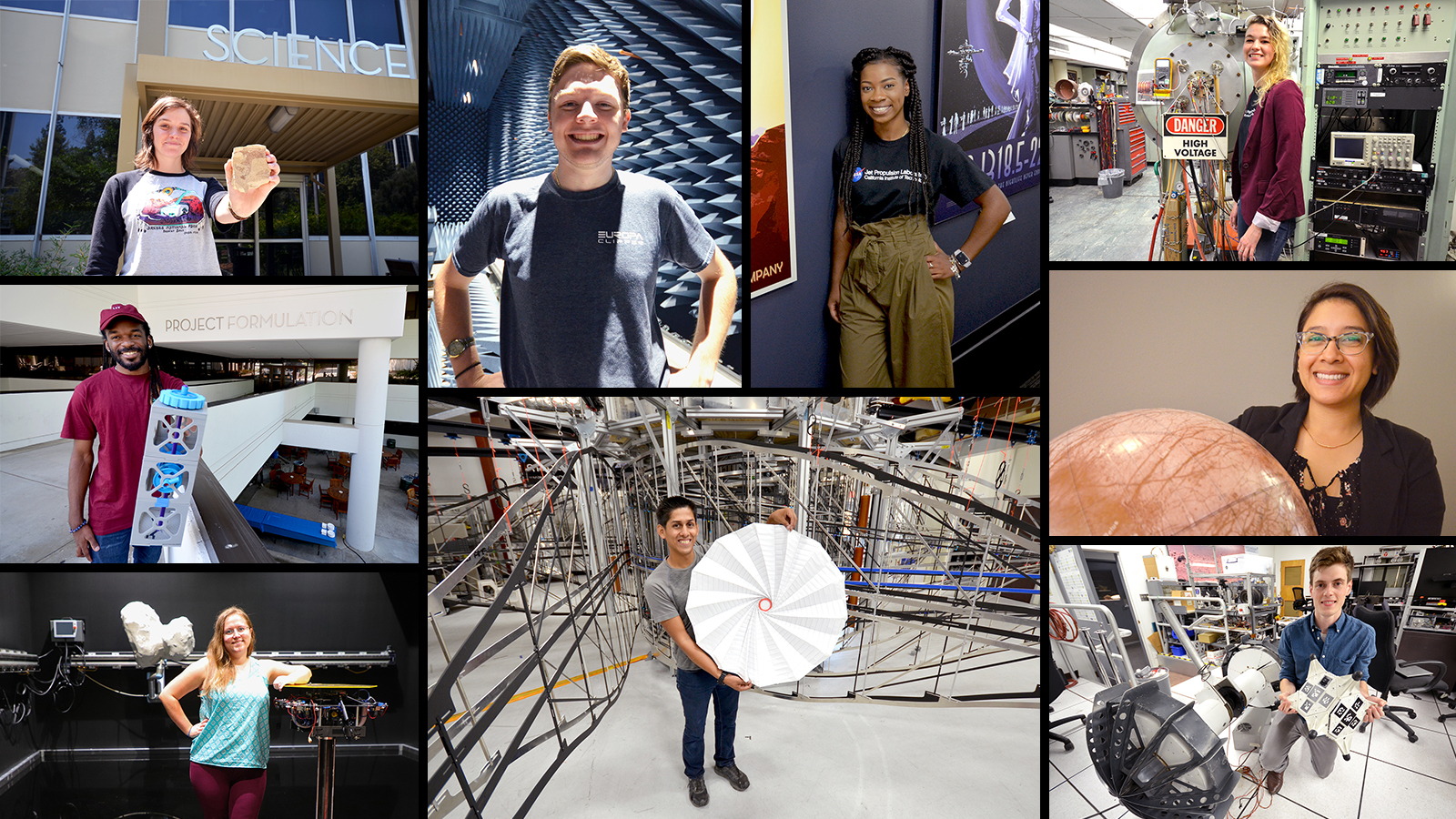Teachable Moments | March 6, 2020
We've Got the Formula for a Stellar Pi Day
Update: March 16, 2020 – The answers to the 2020 NASA Pi Day Challenge are here! View the illustrated answer key (also available as a text-only doc).
In the News
Our annual opportunity to indulge in a shared love of space exploration, mathematics and sweet treats has come around again! Pi Day is the March 14 holiday that celebrates the mathematical constant pi – the number that results from dividing any circle's circumference by its diameter.

Visit the Pi in the Sky 7 lesson page to explore classroom resources and downloads for the 2019 NASA Pi Day Challenge. Image credit: NASA/JPL-Caltech | + Expand image
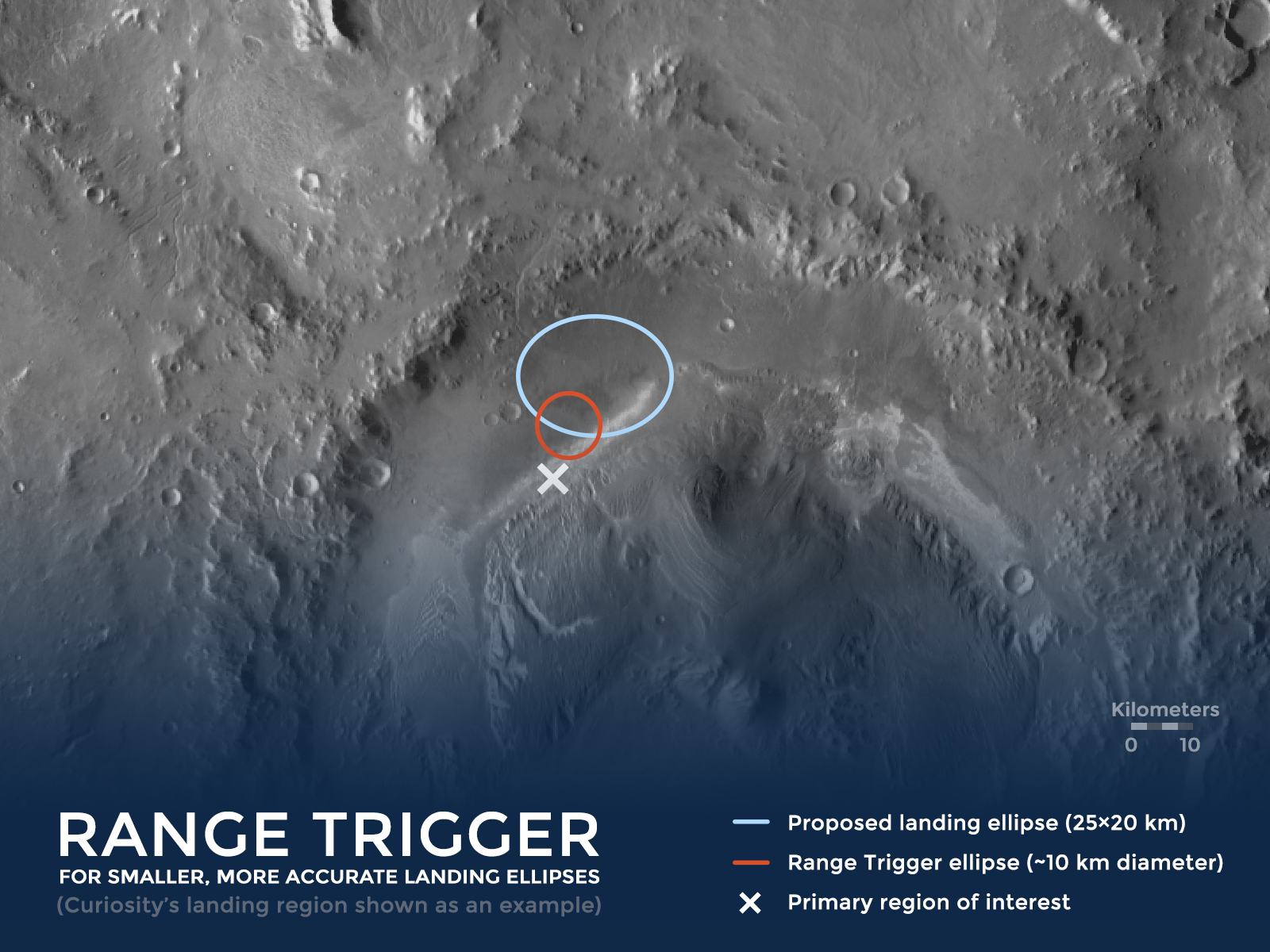
A new Mars landing technique called Range Trigger is reducing the size of the ellipse where spacecraft touch down. Image credit: NASA/JPL-Caltech | › Full image and caption
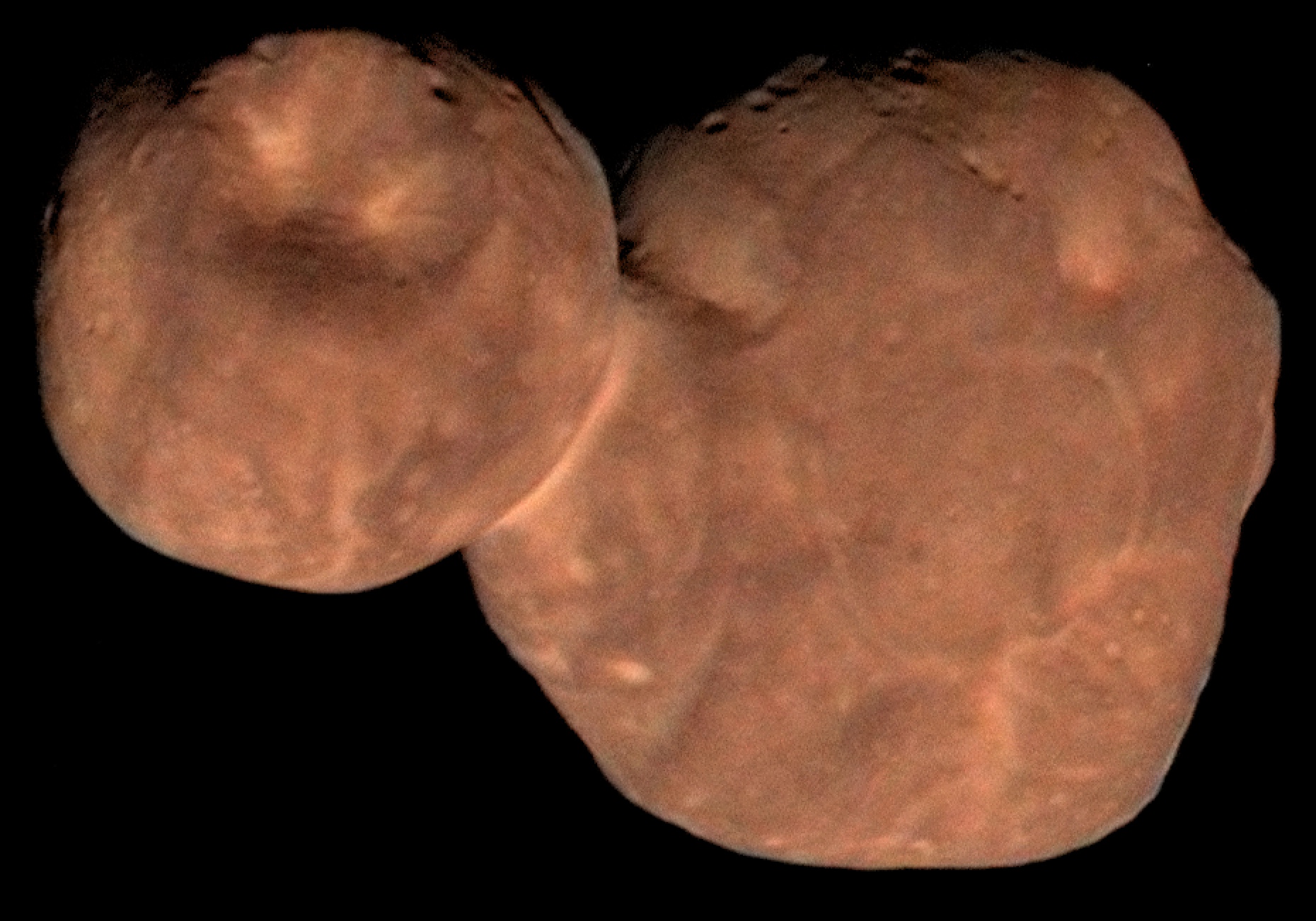
Composite image of the Kuiper Belt object Arrokoth from NASA's New Horizons spacecraft. Image credit: NASA/Johns Hopkins University Applied Physics Laboratory/Southwest Research Institute/Roman Tkachenko | › Full image and caption
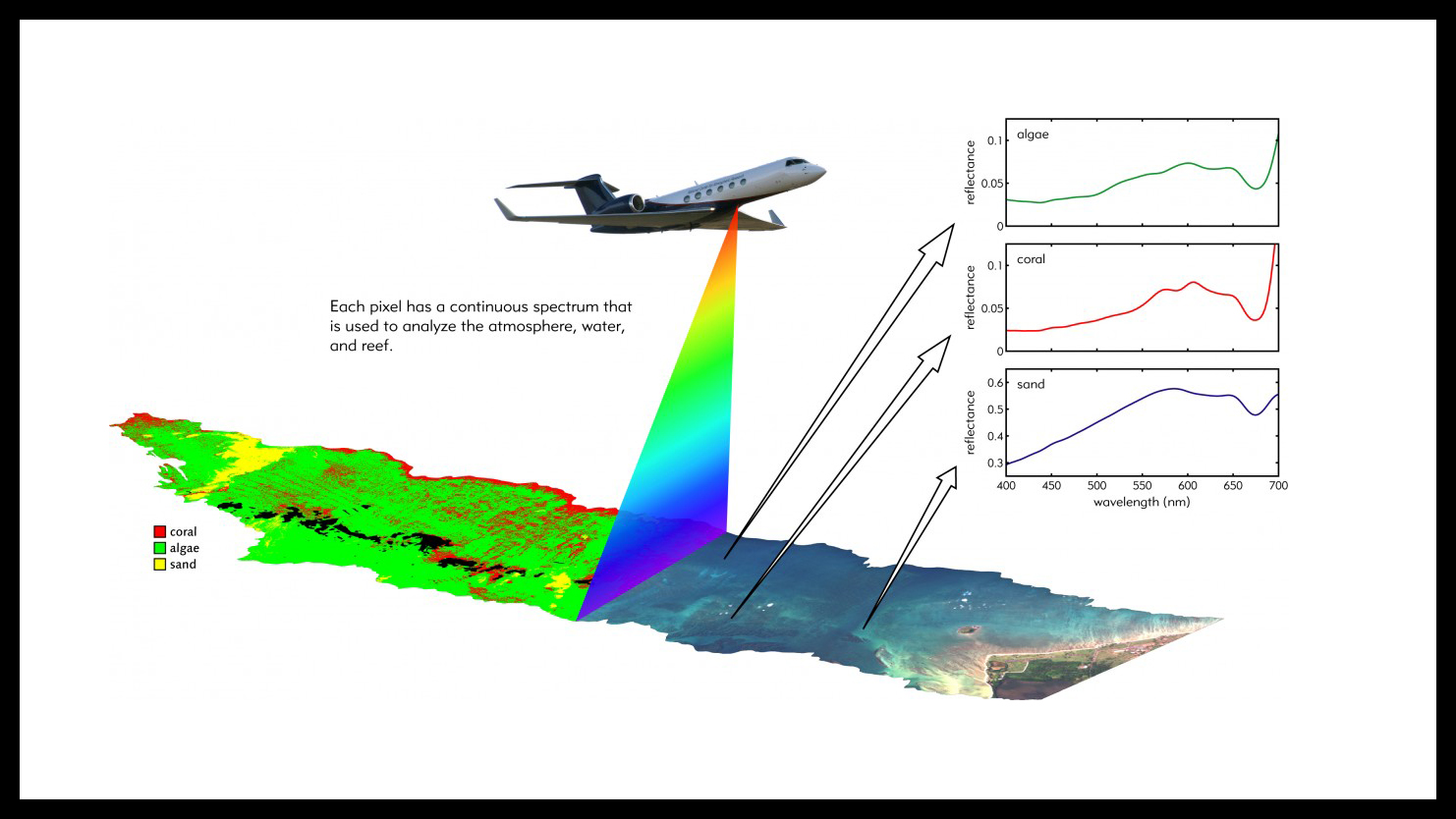
The CORAL mission records the spectra of light reflected from the ocean to study the composition and health of Earth's coral reefs. Image credit: NASA | + Expand image
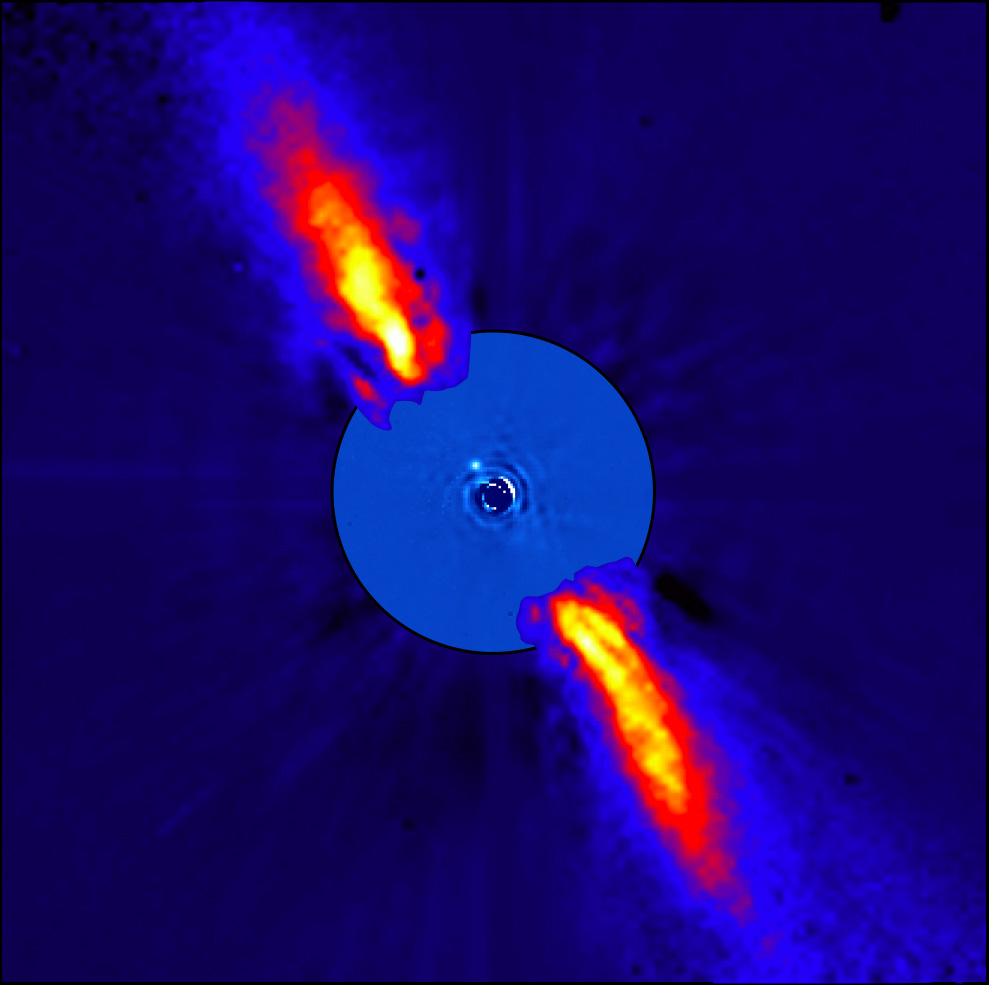
The star Beta Pictoris and its surrounding debris disk in near-infrared light. Image credit: ESO/A.-M. Lagrange et al. | › Full image and caption
Besides providing an excuse to eat all varieties of pie, Pi Day gives us a chance to appreciate some of the ways NASA uses pi to explore the solar system and beyond. You can do the math for yourself – or get students doing it – by taking part in the NASA Pi Day Challenge. Find out below how to test your pi skills with real-world problems faced by NASA space explorers, plus get lessons and resources for educators.
How It Works
The ratio of any circle's circumference to its diameter is equal to pi, which is often rounded to 3.14. But pi is what is known as an irrational number, so its decimal representation never ends, and it never repeats. Though it has been calculated to trillions of digits, we use far fewer at NASA.
Pi is useful for all sorts of things, like calculating the circumference and area of circular objects and the volume of cylinders. That's helpful information for everyone from farmers irrigating crops to tire manufacturers to soup-makers filling their cans. At NASA, we use pi to calculate the densities of planets, point space telescopes at distant stars and galaxies, steer rovers on the Red Planet, put spacecraft into orbit and so much more! With so many practical applications, it's no wonder so many people love pi!
In the U.S., 3.14 is also how we refer to March 14, which is why we celebrate the mathematical marvel that is pi on that date each year. In 2009, the U.S. House of Representatives passed a resolution officially designating March 14 as Pi Day and encouraging teachers and students to celebrate the day with activities that teach students about pi.
The NASA Pi Day Challenge
This year's NASA Pi Day Challenge poses four puzzlers that require pi to compare the sizes of Mars landing areas, calculate the length of a year for one of the most distant objects in the solar system, measure the depth of the ocean from an airplane, and determine the diameter of a distant debris disk. Learn more about the science and engineering behind the problems below or click the link to jump right into the challenge.
› Take the NASA Pi Day Challenge
› Educators, get the lesson here!
Mars Maneuver
Long before a Mars rover touches down on the Red Planet, scientists and engineers must determine where to land. Rather than choosing a specific landing spot, NASA selects an area known as a landing ellipse. A Mars rover could land anywhere within this ellipse. Choosing where the landing ellipse is located requires compromising between getting as close as possible to interesting science targets and avoiding hazards like steep slopes and large boulders, which could quickly bring a mission to its end. In the Mars Maneuver problem, students use pi to see how new technologies have reduced the size of landing ellipses from one Mars rover mission to the next.
Cold Case
In January 2019, NASA's New Horizons spacecraft sped past Arrokoth, a frigid, primitive object that orbits within the Kuiper Belt, a doughnut-shaped ring of icy bodies beyond the orbit of Neptune. Arrokoth is the most distant Kuiper Belt object to be visited by a spacecraft and only the second object in the region to have been explored up close. To get New Horizons to Arrokoth, mission navigators needed to know the orbital properties of the object, such as its speed, distance from the Sun, and the tilt and shape of its orbit. This information is also important for scientists studying the object. In the Cold Case problem, students can use pi to determine how long it takes the distant object to make one trip around the Sun.
Coral Calculus
Coral reefs provide food and shelter to many ocean species and protect coastal communities against extreme weather events. Ocean warming, invasive species, pollutants, and acidification caused by climate change can harm the tiny living coral organisms responsible for building coral reefs. To better understand the health of Earth's coral reefs, NASA's COral Reef Airborne Laboratory, or CORAL, mission maps them from the air using spectroscopy, studying how light interacts with the reefs. To make accurate maps, CORAL must be able to differentiate among coral, algae and sand on the ocean floor from an airplane. And to do that, it needs to calculate the depth of the ocean at every point it maps by measuring how much sunlight passes through the ocean and is reflected upward from the ocean floor. In Coral Calculus, students use pi to measure the water depth of an area mapped by the CORAL mission and help scientists better understand the status of Earth's coral reefs.
Planet Pinpointer
Our galaxy contains billions of stars, many of which are likely home to exoplanets – planets outside our solar system. So how do scientists decide where to look for these worlds? Using data gathered by NASA's Spitzer Space Telescope, researchers found that they're more likely to find giant exoplanets around young stars surrounded by debris disks, which are made up of material similar to what's found in the asteroid belt and Kuiper Belt in our solar system. Sure enough, after discovering a debris disk around the star Beta Pictoris, researchers later confirmed that it is home to at least two giant exoplanets. Learning more about Beta Pictoris' debris disk could give scientists insight into the formation of these giant worlds. In Planet Pinpointer, put yourself in the role of a NASA scientist to learn more about Beta Pictoris' debris disk, using pi to calculate the distance across it.
Participate
-
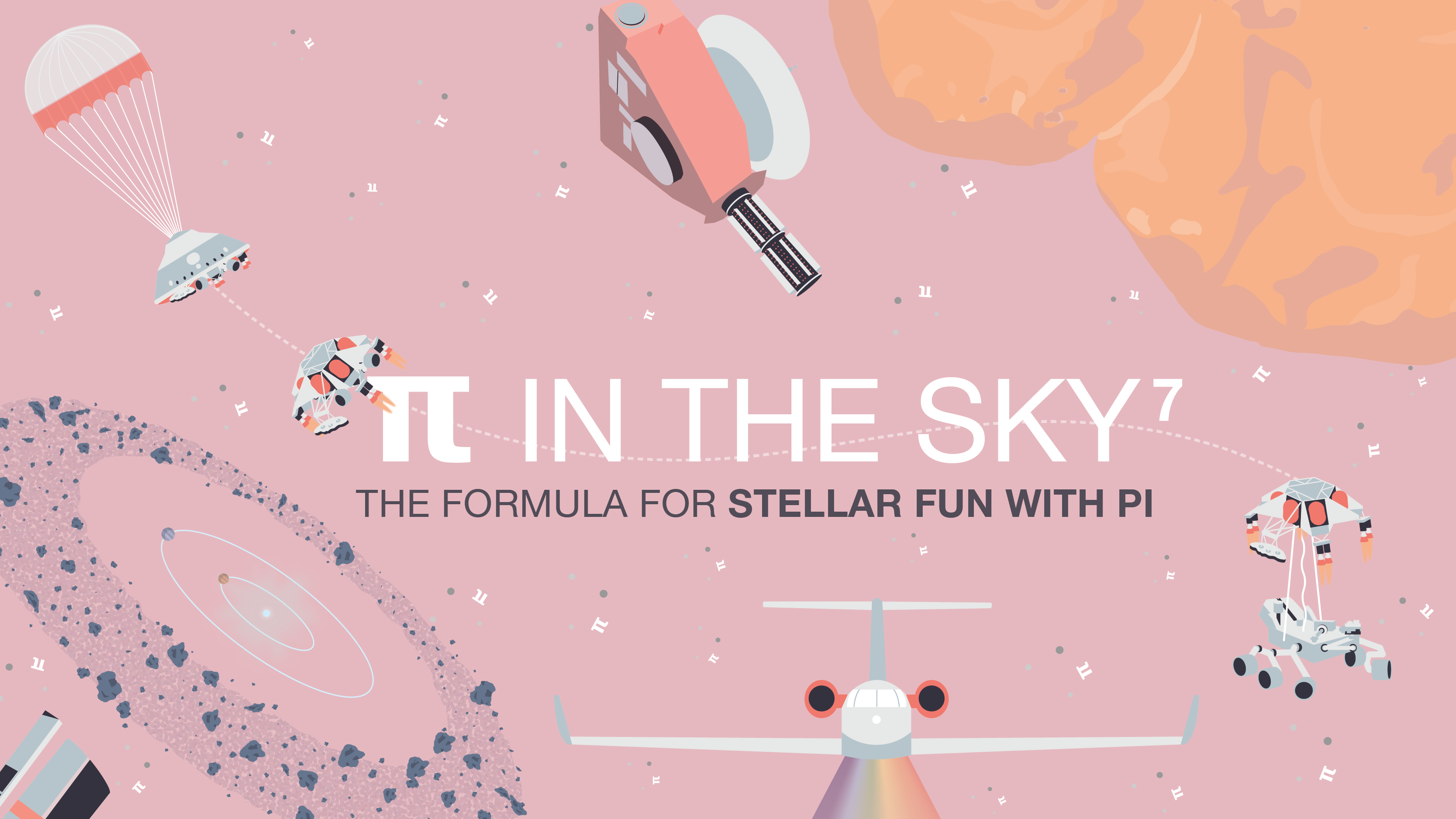
Pi Day Challenge Lessons
Here's everything you need to bring the NASA Pi Day Challenge into the classroom.
Grades 4-12
Time Varies
-
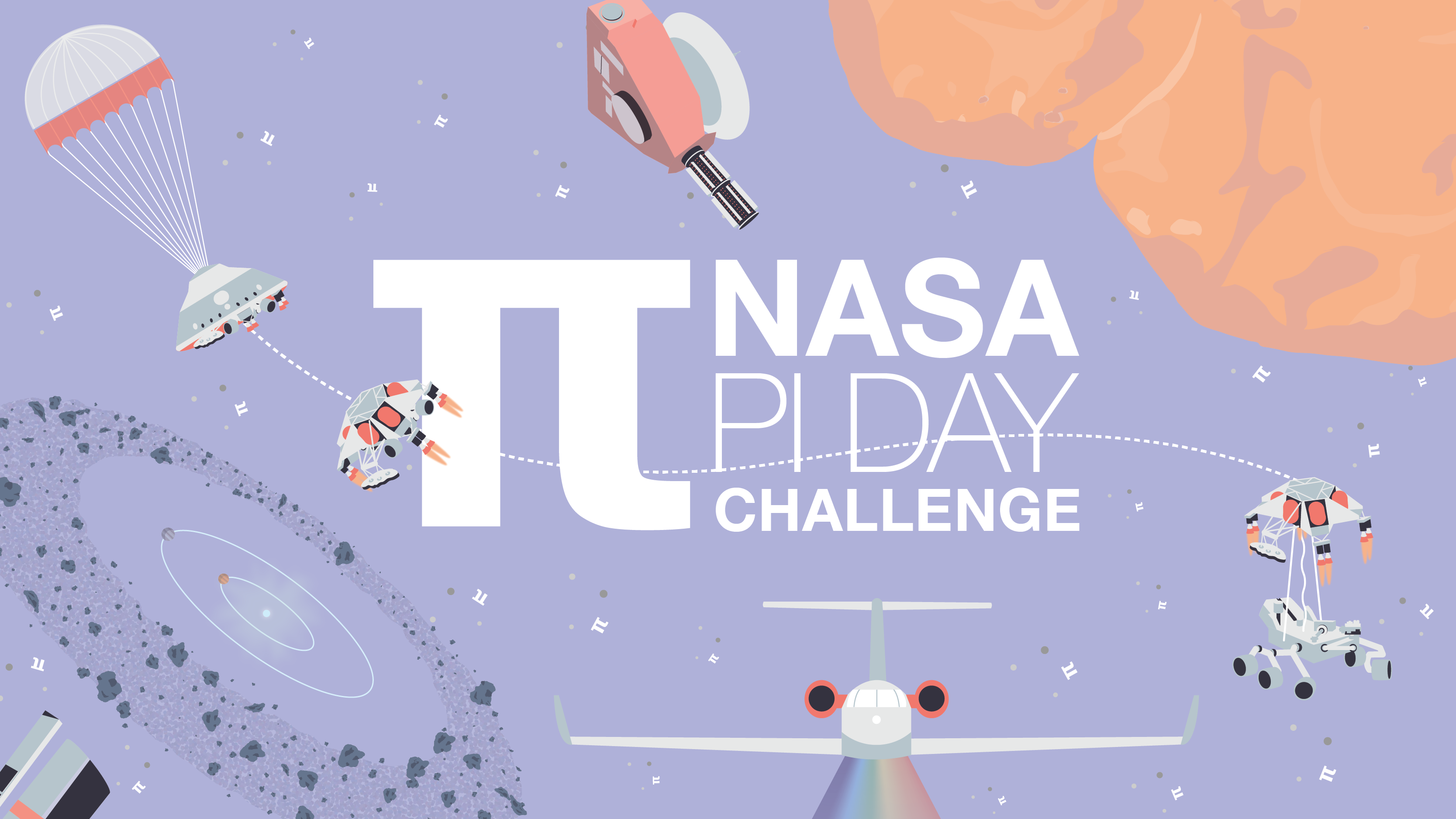
Slideshow: NASA Pi Day Challenge
The entire NASA Pi Day Challenge collection can be found in one, handy slideshow for students.
Grades 4-12
Time Varies
-
Pi Day: What’s Going ’Round
Tell us what you’re up to this Pi Day and share your stories and photos with NASA.
Join the conversation and share your Pi Day Challenge answers with @NASAJPL_Edu on social media using the hashtag #NASAPiDayChallenge
Blogs and Features
-

How Many Decimals of Pi Do We Really Need?
While you may have memorized more than 70,000 digits of pi, world record holders, a JPL engineer explains why you really only need a tiny fraction of that for most calculations.
-
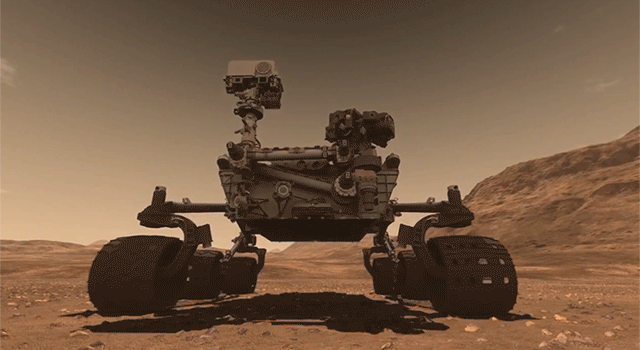
Slideshow: 18 Ways NASA Uses Pi
Whether it's sending spacecraft to other planets, driving rovers on Mars, finding out what planets are made of or how deep alien oceans are, pi takes us far at NASA. Find out how pi helps us explore space.
Related Lessons for Educators
-
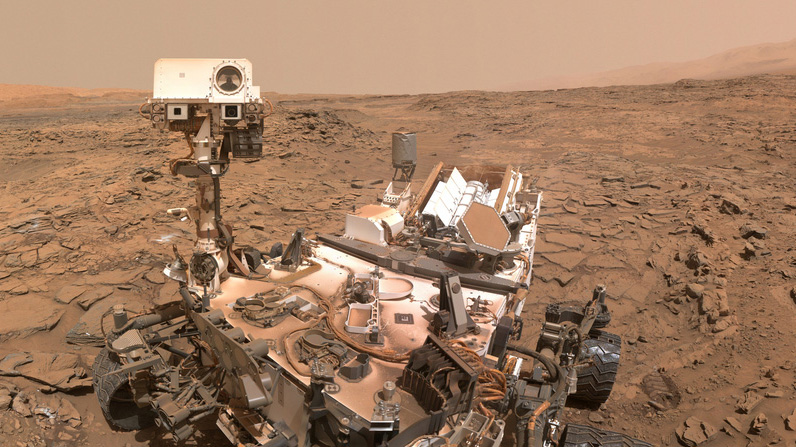
Rover Lessons
Explore a collection of standards-aligned STEM lessons all about rovers.
Grades K-12
Time Varies
-
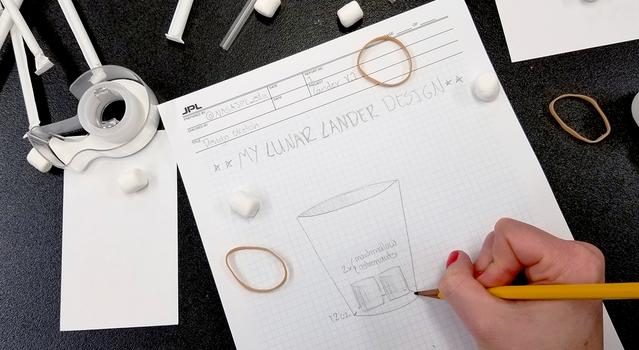
Touchdown
Students design and build a shock-absorbing system that will protect two "astronauts" when they land.
Grades 3-8
Time 30 mins - 1 hr
-
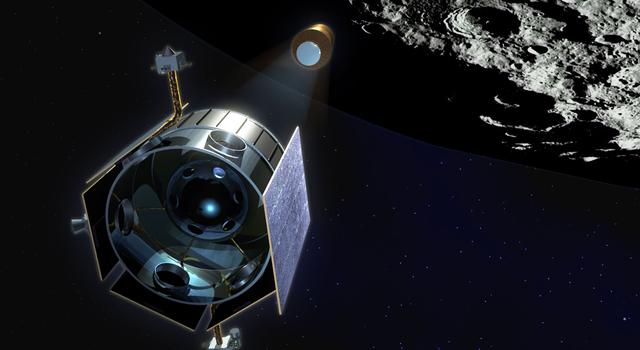
On Target
Students modify a paper cup so it can zip down a line and drop a marble onto a target.
Grades 6-12
Time 30 mins - 1 hr
-
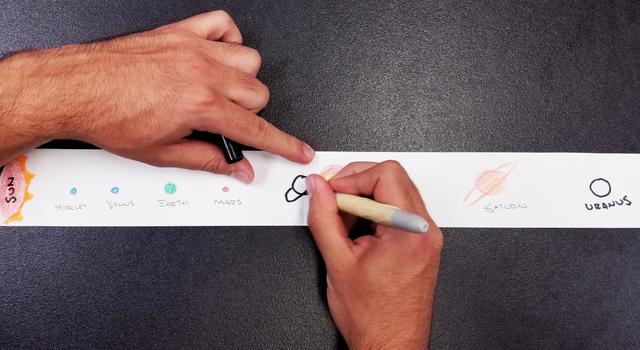
Solar System Scale Models
Explore a collection of standards-aligned STEM lessons all about the size and scale of our solar system.
Grades 1-12
Time Varies
-
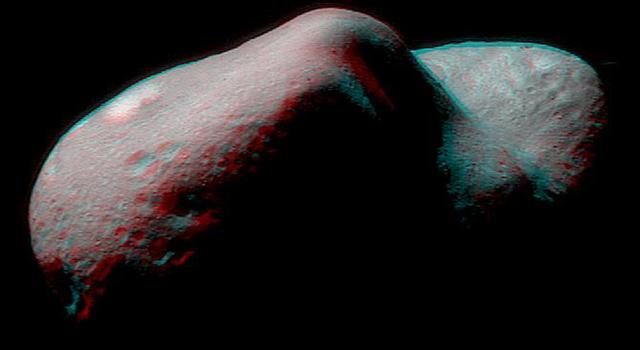
Modeling an Asteroid
Lead a discussion about asteroids and their physical properties, then have students mold their own asteroids out of clay.
Grades 3-5
Time 30 mins - 1 hr
-
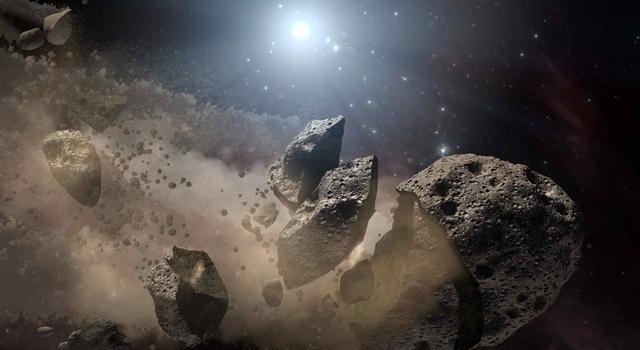
Math Rocks: A Lesson in Asteroid Dynamics
Students use math to investigate a real-life asteroid impact.
Grades 8-12
Time 30 mins - 1 hr
-

Asteroid Ace: A 'Pi in the Sky' Math Challenge
Students use pi to calculate the rotation rate of an asteroid from another solar system in this illustrated math problem.
Grades 11-12
Time < 30 mins
-
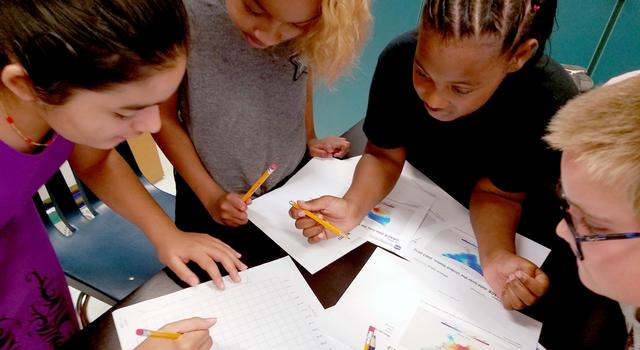
Climate Change Lessons
Explore a collection of standards-aligned STEM lessons all about Earth's changing climate.
Grades K-12
Time Varies
-
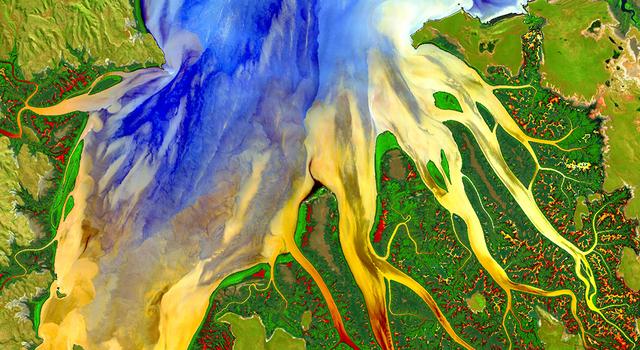
Using Light to Study Planets
Students build a spectrometer using basic materials as a model for how NASA uses spectroscopy to determine the nature of elements found on Earth and other planets.
Grades 6-11
Time < 2 hrs
-
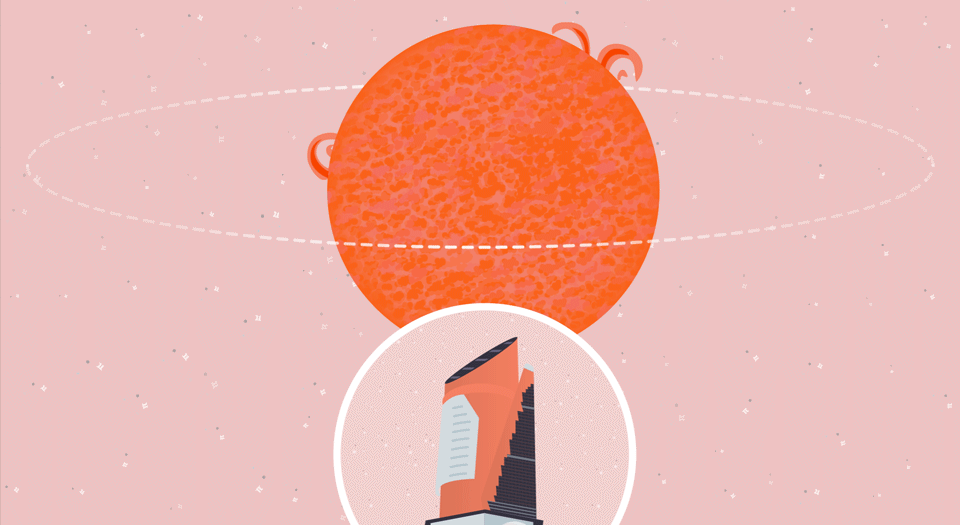
Solar Sleuth: A 'Pi in the Sky' Math Challenge
In this illustrated math problem, students use pi and data from the Kepler space telescope to find the size of a planet outside our solar system.
Grades 6-9
Time < 30 mins
-
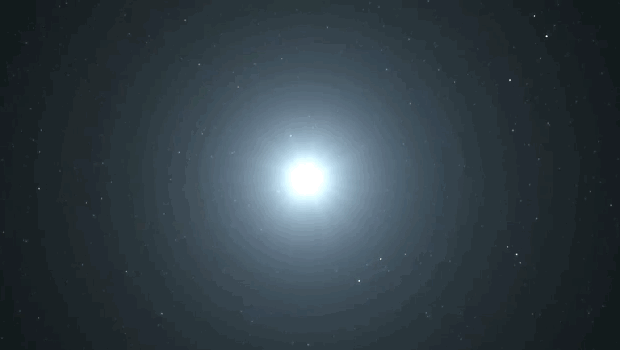
Exploring Exoplanets with Kepler
Students use math concepts related to transits to discover real-world data about Mercury, Venus and planets outside our solar system.
Grades 6-12
Time 30 mins - 1 hr
-
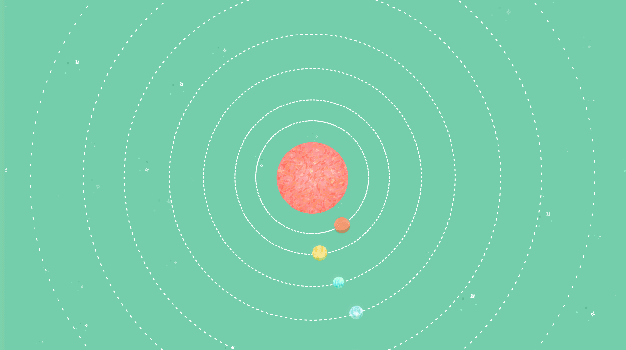
Habitable Hunt: A 'Pi in the Sky' Math Challenge
In this illustrated math problem, students use the mathematical constant pi to find the "habitable zone" around a distant star and determine which of its planets are in that zone.
Grades 11-12
Time < 30 mins
Related Activities for Students
-
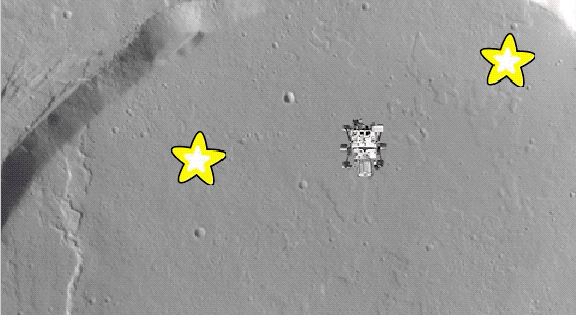
Make a Moon or Mars Rover Game
Create a Moon or Mars exploration game using Scratch, a visual programming language. Think like NASA space-mission planners to design your game!
Type Project
Subject Technology
-
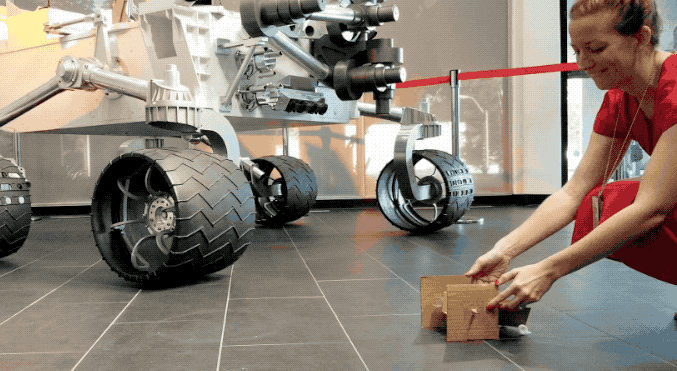
Make a Cardboard Rover
Build a rubber-band-powered rover that can scramble across a room.
Type Project
Subject Engineering
-
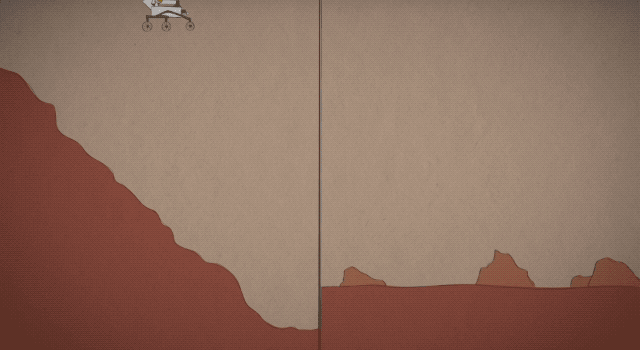
Mars in a Minute: How Do You Choose a Landing Site?
So, you want to study Mars with a lander or rover – but where exactly do you send it? Learn how scientists and engineers tackle the question of where to land on Mars in this 60-second video.
Type Video
Subject Engineering
-

Mars in a Minute: How Do You Land on Mars?
Getting a spacecraft to Mars is one thing. Getting it safely to the ground is a whole other challenge! This 60-second video from NASA's Jet Propulsion Laboratory explains three ways to land on the surface of the Red Planet.
Type Video
Subject Engineering
-
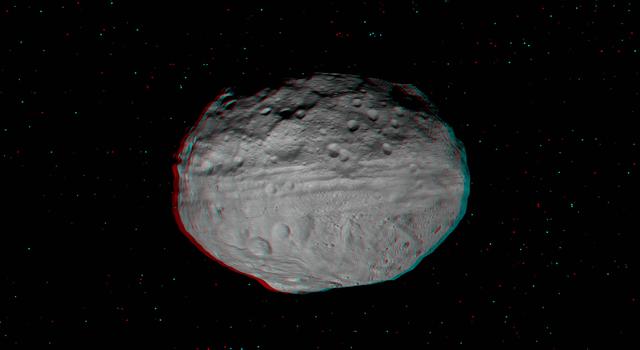
What's That Space Rock?
Find out how to tell the difference between asteroids, comets, meteors, meteorites and other bodies in our solar system.
Type Slideshow
Subject Science
-
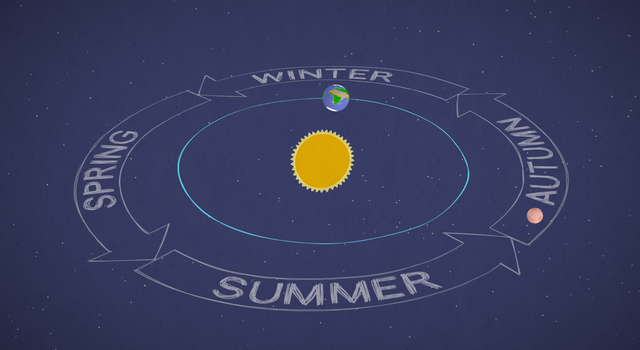
Mars in a Minute: How Long is a Year on Mars?
How long is does it take Mars to make one trip around the Sun and why is one Earth year shorter? Find out in one minute!
Type Video
Subject Science
-
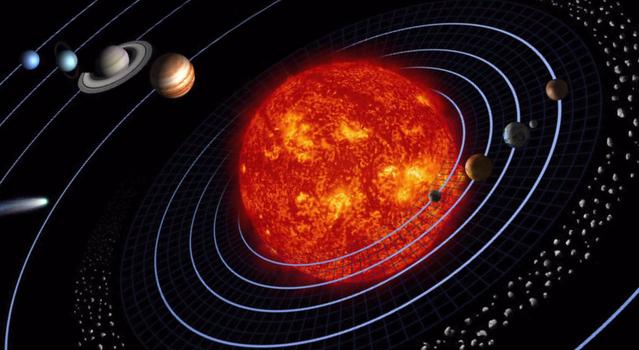
Space Place in a Snap: The Solar System's Formation
Find out how our solar system formed and how it came to be the busy place it is today.
Type Video
Subject Science
-
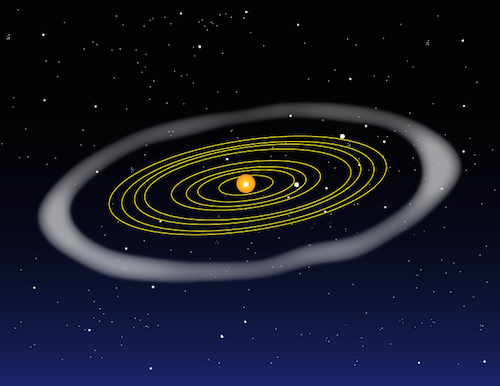
What Is the Kuiper Belt?
Learn about the Kuiper Belt and some of its famous members, Kuiper Belt Objects.
Type Article
Subject Science
-
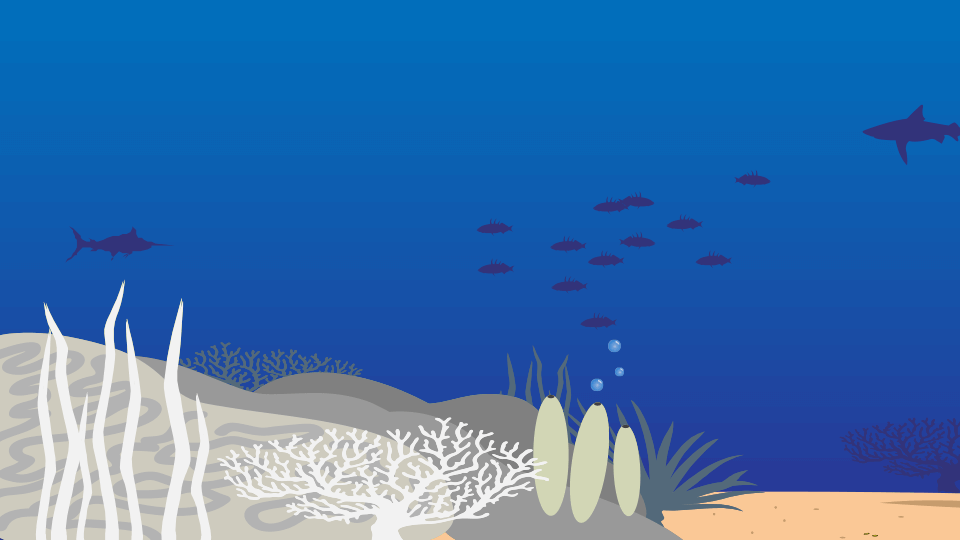
Coral Bleaching Simulator
Adjust water temperature and pollution levels in this simulator to see what happens to a coral reef depending on the conditions you choose!
Type Interactive
Subject Science
-
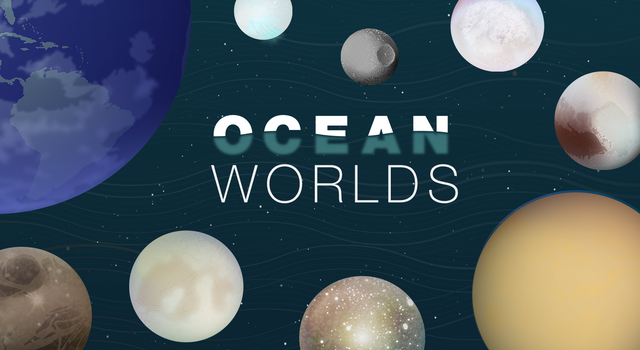
Ocean Worlds
Where might oceans – and living things – exist beyond Earth? Scientists have their eyes on these places in our own solar system.
Type Slideshow
Subject Science
-
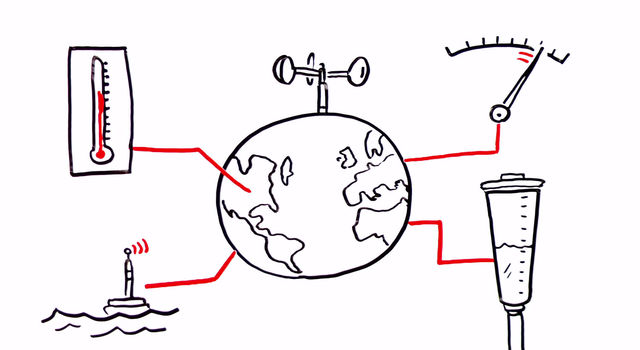
NASA's Earth Minute: Mission to Earth?
NASA doesn't just explore outer space! It studies Earth, too, with a fleet of spacecraft and scientists far and wide.
Type Video
Subject Science
-

NASA's Earth Minute: Earth Has a Fever
Why is Earth getting hotter and what does that mean for us?
Type Video
Subject Science
NOAA Video Series: Coral Comeback
- Article: Giant Exoplanet Hunters: Look for Debris Disks
- Video: The Evolution of a Planet-Forming Disk
- Video: Birth of "Phoenix" Planets?
Multimedia
-
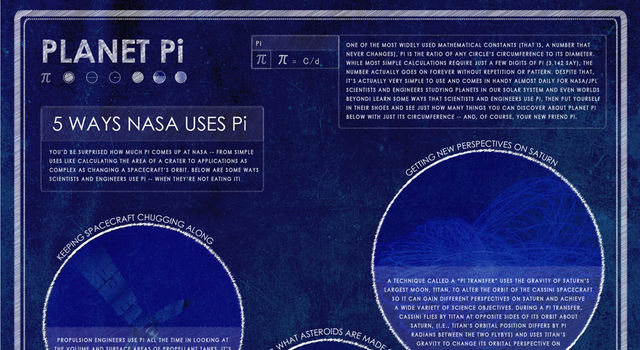
Infographic: Planet Pi
This poster shows some of the ways NASA scientists and engineers use the mathematical constant pi (3.14) and includes common pi formulas.
- Posters: Exoplanet Travel Bureau
Facts and Figures
Missions and Instruments
Websites
TAGS: K-12 Education, Math, Pi Day, Pi, NASA Pi Day Challenge, Events, Space, Educators, Teachers, Parents, Students, STEM, Lessons, Problem Set, Mars 2020, Perseverance, Curiosity, Mars rovers, Mars landing, MU69, Arrokoth, New Horizons, Earth science, Climate change, CORAL, NASA Expeditions, coral reefs, oceans, Spitzer, exoplanets, Beta Pictoris, stars, universe, space telescope, Climate TM
Edu News | October 23, 2019
Mars Rovers and Navigation Tech Collide in NASA-JPL Education Program
Finding the best driving route for a Mars rover isn't as easy as turning on a navigation app – but John Park and Hiro Ono want to make it so. A program at NASA's Jet Propulsion Laboratory is helping them turn their idea into a reality, all while promoting diversity in STEM.
A tenure-track faculty member at North Carolina A&T State University, Park has spent the past two summers at JPL through an Education Office initiative designed to connect students and researchers from Historically Black Colleges and Universities (HBCUs) to the Laboratory's missions and science. The NASA-backed pilot program has brought more than a dozen student interns and several faculty researchers to JPL for projects investigating Mars, Earth and planets beyond our solar system.
Until his stint at JPL, Park's research focused solely on Earth-bound transportation technologies, such as those used by self-driving cars. When he learned about JPL's HBCU initiative from a colleague who had participated in the program, he seized on the chance to apply his research to space exploration.
"My previous projects and publications have dealt with decision-making tools for exploring uncertain areas on Earth and maximizing the information that's available," says Park, who also helped connect several students from North Carolina A&T to internship opportunities with the HBCU initiative. "I thought I could help bring that perspective to Mars rovers and helicopters."
While researching potential applications for his research at JPL, Park learned that the challenges of getting around on Mars are similar to those faced by drivers on Earth. Rovers also need to get from place to place safely and efficiently – they're just avoiding boulders instead of traffic jams.
It was precisely those challenges that Hiro Ono in JPL's Robotic Mobility Group also wanted to overcome. "I had an idea that I wanted to try, and we had all the ingredients," says Ono, who designs artificial intelligence systems for future rover missions. "The HBCU program allowed us to try the idea."
The HBCU initiative brought Park and Ono together along with Larkin Folsom, a student intern from North Carolina A&T. Together, the trio developed a proposal for a future system that would work similarly to the navigation apps we use to get through rush-hour traffic. The system would allow rovers to analyze routes as they drive, providing mission planners with information about the routes most likely to be hazard-free so they can make the most efficient use of the spacecraft's limited energy supply and maximize the mission's science goals.
"Previously, the way that we operated on Mars was to make the best guess about drivability solely from looking at orbital images," says Ono. "The idea that we are working on is to introduce the concept of probability. So if there are two terrains that are important to you but one of them is 90% traversable and the other is 60% traversable, which are you going to choose?"
In September, the National Science Foundation awarded Park, who submitted the proposal, with a grant to pursue the project. Park says the funding will go toward a JPL internship opportunity for a Ph.D. student from his university to continue research with Ono's team.
Jenny Tieu is a STEM education project manager at JPL who manages the HBCU initiative with Roslyn Soto. She helped connect Park and Ono and says it's collaborations like these that the initiative was designed to foster.
"Our goal with this initiative is to expand the number of HBCU students and faculty members participating in research at JPL and ultimately increase diversity among the Laboratory's workforce," says Tieu. "This National Science Foundation award is a positive indication that the initiative is not only building strong relationships between HBCUs and JPL, but also creating a ripple effect for additional opportunities."
Now in its fourth year, the HBCU initiative will once again bring students and faculty to JPL for research opportunities in the summer of 2020.
Meanwhile, Park and Ono are exploring ways to expand their technology into other arenas, including hurricane research and emergency response. Park has already received support from the U.S. Department of Transportation as well as the state DOT in Virginia and North Carolina for additional Earth-based applications of the technology.
Ono is serving as a consultant on the projects and has high hopes the results of the research will make their way back to JPL.
Says Ono, "In the long run, having an intern, giving them a good experience, helping their career is going to come back to us. We, as JPL, can build connections around the world and among industry partners that are going to come back to us eventually."
This Q&A is part of an ongoing series highlighting the stories and experiences of students and faculty who came to JPL as part of the laboratory's collaboration with historically black colleges and universities, or HBCUs. › Read more from the series
The laboratory’s STEM internship and fellowship programs are managed by the JPL Education Office. Extending the NASA Office of STEM Engagement’s reach, JPL Education seeks to create the next generation of scientists, engineers, technologists and space explorers by supporting educators and bringing the excitement of NASA missions and science to learners of all ages.
Career opportunities in STEM and beyond can be found online at jpl.jobs. Learn more about careers and life at JPL on LinkedIn and by following @nasajplcareers on Instagram.
TAGS: Higher Education, Internships, STEM, Engineering, HBCU, Research, Mars, Mars rovers, robotics, AI, navigation, universities, college, Asian Pacific American Heritage Month
Career Guidance, Find Your Place at JPL | October 16, 2018
Fight and Flight: One Woman's Fearless Journey to the Stars
In 1975, 10-year-old Nagin Cox’s home life was unraveling. It was a time when Cox grew up hearing that girls were “worthless” and thought only about making it to age 18 so she could be free.
“I remember looking up at the stars and thinking, ‘I’m going to live and get through this,” Cox, now a spacecraft systems engineer for Mars 2020 recalls. “I need to set a goal. I need something so meaningful it will help me get through the next eight years.'”
That goal revealed itself when she was 14, a curly-haired Indian girl fascinated by “Star Trek” and Carl Sagan’s “Cosmos.” She wanted to explore the universe. And no, she didn't want to be an astronaut.
“If you really want to go where someone has never been, you want to be with the robots. They truly explore first,” she says. “There was one place that did that consistently and that was NASA’s Jet Propulsion Laboratory.”
She just needed to figure out how.




